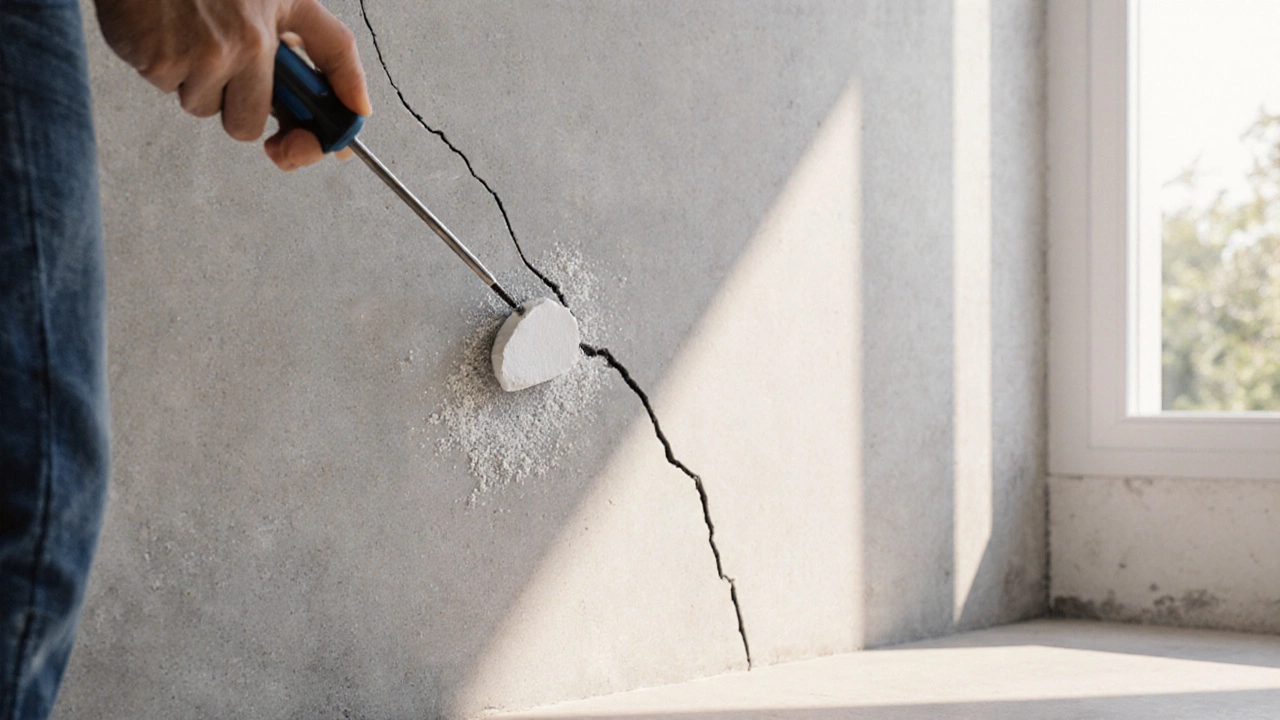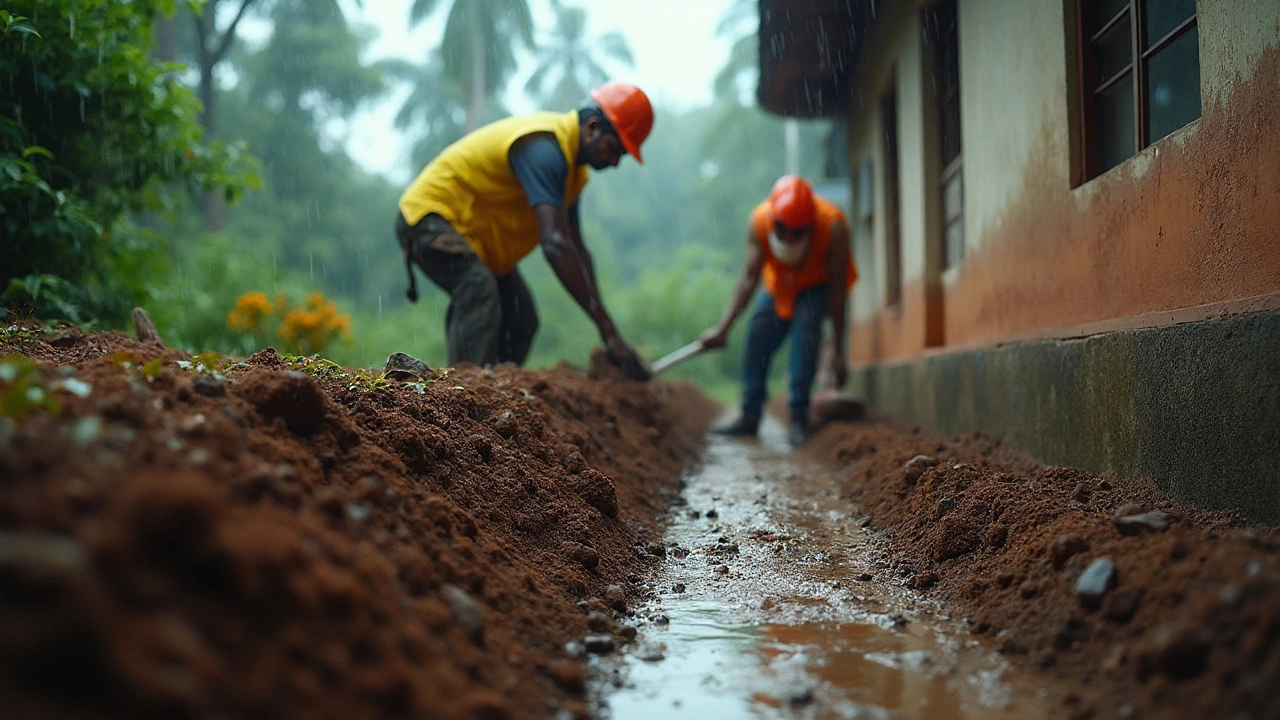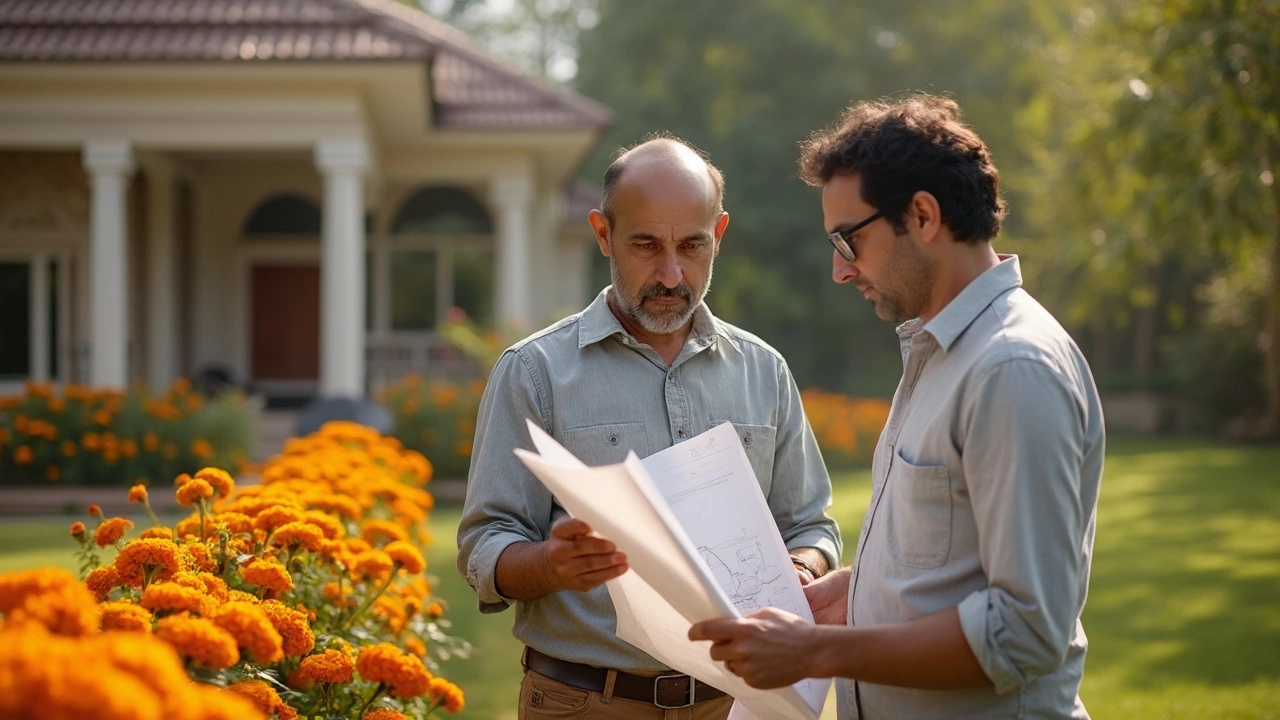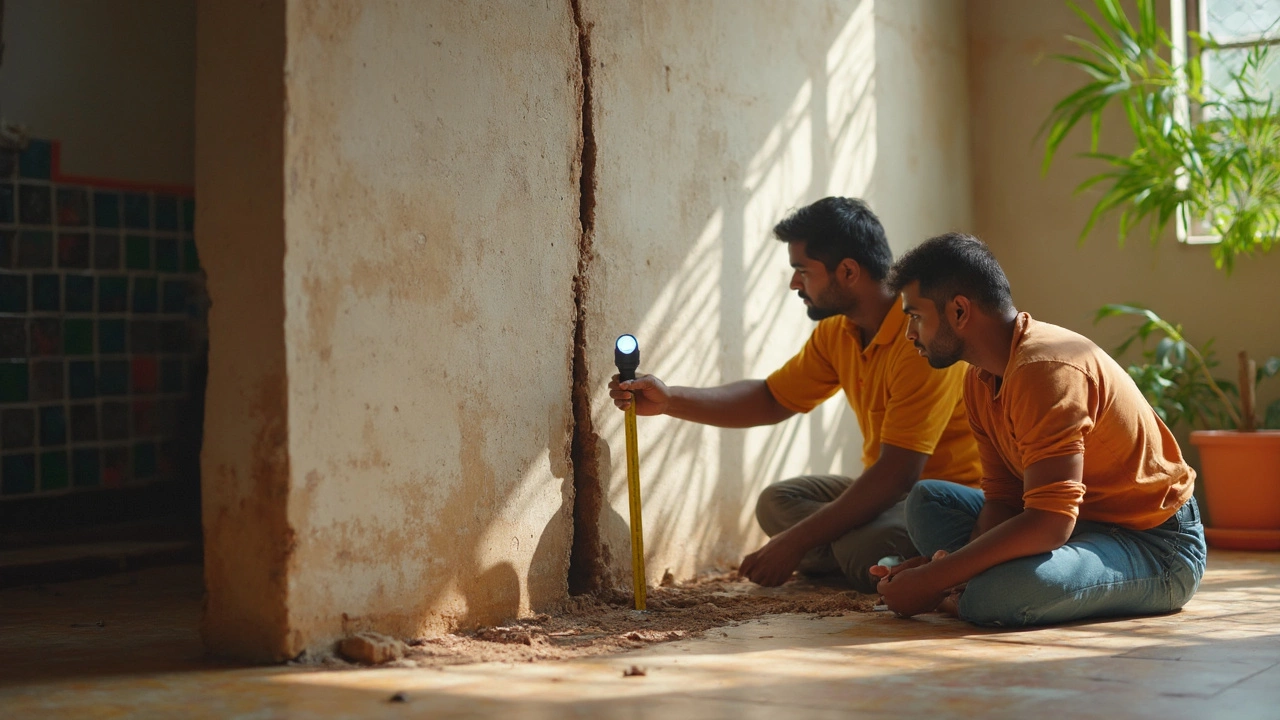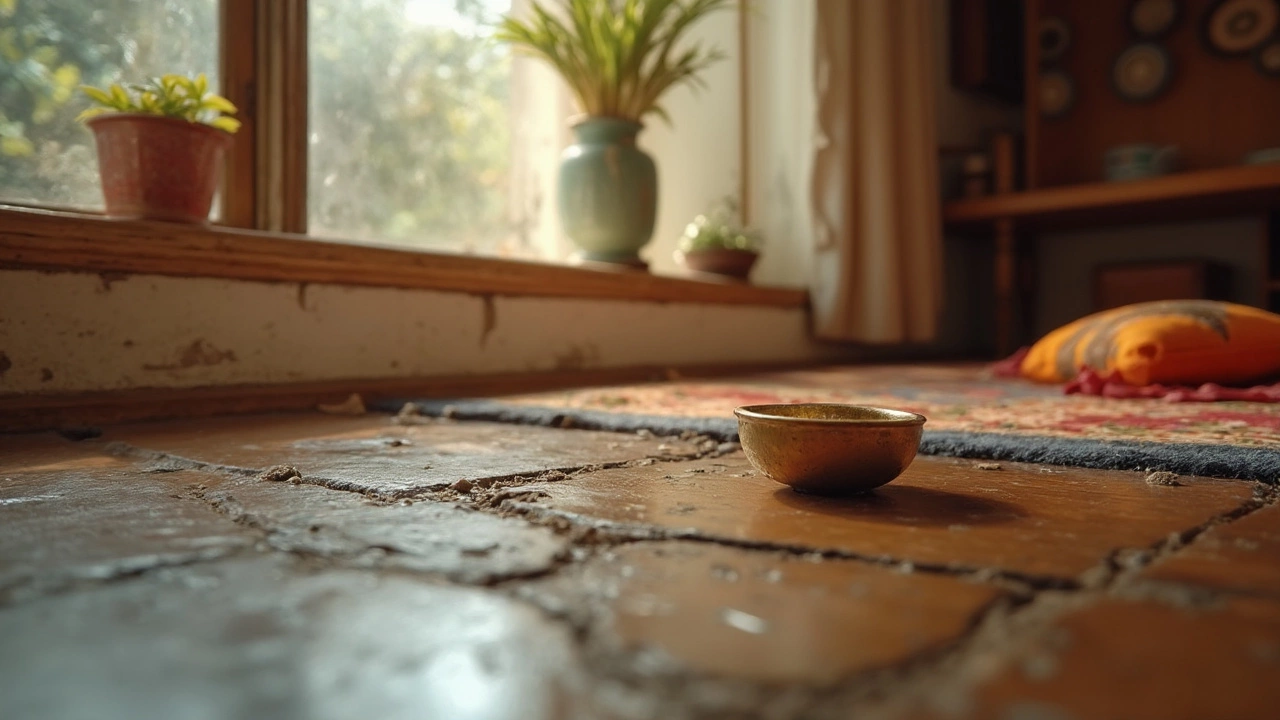Foundation Repair: How to Spot Issues, Pick Solutions, and Save Money
Notice cracks in the walls or uneven floors? Those are the tell‑tale signs that your foundation might be talking to you. Ignoring them can turn a small headache into a costly disaster, but spotting the problem early gives you plenty of options. Below you’ll find the most common foundation woes, quick ways to diagnose them, and smart steps to fix them without breaking the bank.
Common Foundation Problems You’ll See Around the House
First off, not every crack means the whole house is about to collapse. Horizontal cracks, for example, often point to soil pressure pulling the walls inward. Vertical cracks usually show settling—still serious, but often easier to repair. The size matters too: a hairline crack (under 1/8 inch) can be normal shrinkage, while anything wider than a quarter inch deserves a professional’s eye.
Water is another sneaky culprit. When drainage fails, moisture seeps into the soil, expands, and pushes against the foundation. Look for damp spots in the basement, musty smells, or warped flooring. These clues signal that water damage is weakening the structure and that a drainage fix should be first on your to‑do list.
Sinking foundations are the big alarm bells. They create a sloping floor, doors that jam, and cracks that spread outward. Often the cause is poor soil compaction or expansive clay that swells when wet. If you see a slope of more than a quarter inch over a few feet, it’s time to call in experts for pier installation or mudjacking.
Choosing the Right Repair Method for Your Situation
Once you know what you’re dealing with, pick a repair that matches the problem’s severity and your budget. For minor cracks, epoxy injection or polyurethane foam can seal the gap and restore strength. These methods are quick, clean, and usually cost a few hundred dollars.
If the crack is wider or the wall is moving, carbon‑fiber straps or wall anchors give extra support without digging up the whole house. They’re a middle‑ground solution—more expensive than a simple injection but far cheaper than full pier replacement.
When the foundation is actually sinking, you’ll need deeper intervention. Helical piers, push piers, or concrete piers are driven into stable soil below the problem area and then lift the house back into place. This is the most costly route, often running into several thousand dollars, but it stops the damage in its tracks and protects your home’s resale value.
Don’t forget the cheap fixes that can prevent bigger jobs later. Installing proper gutters, French drains, and a proper grading slope away from the house keeps water out of the foundation. A clean drainage system can save you thousands on future repairs.
Finally, always get a written estimate that breaks down labor, materials, and any warranty. Knowing exactly what you’re paying for helps you compare quotes and avoid surprise costs later.
Bottom line: a solid foundation starts with early detection, the right repair choice, and good drainage. Keep an eye on cracks, moisture, and floor level, then act fast. You’ll protect your home, keep its value steady, and avoid the nightmare of endless repairs.
Inside vs Outside Foundation Crack Repair: Which Method Works Best?
Learn when to repair foundation cracks from the interior or exterior, compare methods, costs, and get a clear step‑by‑step guide for lasting results.
Continue ReadingHow to Fix a Foundation Without Lifting the House (UK 2025): Methods, Costs, and When It Works
Yes-you can stabilise a foundation without jacking. Learn drainage fixes, crack injection, foam lifting, carbon fibre, and pier stabilisation with UK costs and steps.
Continue ReadingBest Time of Year for Foundation Repair: What You Need to Know
Figuring out when to fix your home's foundation isn't just about spotting cracks. Timing repairs with the right season can actually save you money, cut down on headaches, and make repairs last longer. This article unpacks how weather and soil conditions mess with your foundation, lays out when pros get the best results, and shares tips on planning repairs for a smoother project. Learn why some months are way better than others for tackling your biggest home headache.
Continue ReadingDoes Foundation Repair Decrease Home Value? The Real Impact on Your Property
Worried that fixing your foundation could hurt your home's value? This article cuts through the confusion and looks at what really happens to property value after foundation repair. We'll bust some myths, explain what buyers and inspectors see, and give honest tips for protecting your resale value. Get the facts before you make a move. Know exactly what to expect if you need major repairs under your house.
Continue ReadingFoundation Crack Size: What’s Actually Okay?
Foundation cracks can make homeowners anxious, but not every crack spells disaster. This article walks through what crack sizes are usually okay, which ones mean trouble, and the reasons behind those lines in your basement or slab. Find out how to spot safe versus risky cracks, plus practical tips on what to do next. Learn when you can DIY and when you really need to call for professional help.
Continue ReadingHorizontal Foundation Crack Repair Cost: What Homeowners Pay in 2025
Wondering how much it costs to fix a horizontal foundation crack? This article breaks down the price factors, from crack width to repair type. You'll find out what's considered a quick fix and what could run up big bills. We’ll also cover ways to spot problems early and tips to save money. Expect straight answers so you can budget with confidence.
Continue ReadingWater Damage to Foundation: What It Looks Like and How to Spot It
This article breaks down the real signs of water damage to your home's foundation. You'll learn exactly what to look for—like cracks, leaks, weird smells, and warped floors—that point to trouble. The guide covers why these problems usually happen and which types are serious. Practical tips and simple explanations help anyone spot the warning signs early. Keep your house standing strong by knowing when to act on water damage before it gets out of hand.
Continue ReadingWhen to Walk Away from Foundation Problems
Not all foundation problems need immediate repair, but knowing when to walk away can save homeowners from future headaches and costly repairs. This article explores the warning signs of severe issues, when to consider professional help, and when it's best to leave a property. Get tips on identifying manageable problems versus those signaling deeper trouble. Learn how to weigh the costs, effort, and potential risks of foundation repairs.
Continue ReadingWhat's the Most Expensive Foundation Repair?
Foundation repairs can vary greatly in cost, but some types can break the bank more than others. The most expensive repairs often involve addressing major structural issues, like fixing problems with a sinking foundation or a full replacement. Understanding the types of foundation repairs and their costs can help homeowners plan and prioritize effectively. Stay informed about the signs of foundation trouble to catch issues early and possibly avoid the most costly interventions. Discover useful tips for spotting potential problems and maintaining a solid foundation.
Continue ReadingMajor Foundation Repair: What It Really Means
Major foundation repair isn't something homeowners face daily, but understanding what it involves can save time and money. These repairs are significant because they address critical structural issues that can affect your entire home. Whether it's fixing cracks or stabilizing the foundation, these repairs demand both expertise and proper timing. Learn why they matter, what signs to look for, and when it's time to take action.
Continue ReadingHow to Fix a Sinking Foundation: Quick and Effective Solutions
A sinking foundation can cause serious structural issues in your home, leading to cracks, uneven floors, and more. Understanding the signs, causes, and effective repair techniques is essential for homeowners. This guide provides practical solutions for identifying and addressing foundation problems, helping to preserve the integrity of your home. Learn about the impact of soil conditions, repair methods, and preventative measures.
Continue ReadingUnderstanding Homeowners Insurance and Foundation Leak Coverage
Homeowners insurance can be a complex subject, especially when it comes to understanding what is covered regarding foundation leaks. This article explores whether foundation leaks are typically covered under standard insurance policies, what factors might affect this coverage, and offers practical tips for homeowners facing such issues. By examining common insurance clauses and exceptions, readers will gain a clearer perspective on how to protect their homes effectively. Learn how to communicate with your insurance provider and assess necessary preventative measures.
Continue Reading